Хаас за Испания
Ромен Грожан:
How important is it for Haas F1 Team to put a complete race weekend together at Barcelona, where the speed its shown since testing is carried through practice, qualifying and the race so that you achieve your ultimate goal of scoring points?
The most important part is the race on Sunday. Baku showed that you can have a tough qualifying, but you can come back in the race. Obviously, that won’t be the case every time. Barcelona is a difficult circuit to overtake, so it’s always easier to have a smooth weekend and make sure that both cars are well in the points by Sunday.
When mistakes are made, are they compounded by the fact that the midfield is as competitive as it’s ever been?
The midfield is very competitive and very interesting, but I don’t think any mistake changes those results. You want to be able to score as many points as you can, whenever you can.
Barcelona was repaved prior to preseason testing. How did the new surface rubber in as testing took place and what are your expectations for the track’s evolution during the Spanish Grand Prix?
I did quite like the new tarmac at Barcelona. There was more grip than it had previously, and a faster lap time. Now the question is going to be how it is with warmer weather. That’s something we’ll find out during the race weekend.
How helpful is it to go back to Barcelona where Haas F1 Team has the most data of any track in Formula One simply because you spent two weeks testing there before the season even started?
It’s not as vital as it was in the first year. Now we’ve got good data from everywhere, and the team is really working in a good direction. The engineering group is getting stronger, as well as the group of mechanics, so I don’t think it’s that important that we go back to Barcelona.
Haas F1 Team showed speed in preseason testing at Barcelona, and despite the up-and-down start to the year, it’s maintained that speed through the first four races. Does that show the strength of the Haas VF-18 and, more specifically, its adaptability as the series has visited four distinctly different circuits?
Yes, I think we’ve got a really good baseline and, obviously, the challenge of the year is to keep the development going to make sure that we stay in the race.
In six career Formula One starts at Barcelona, you’ve finished in the points four times. Is there a comfort level with Barcelona because of all the laps you’ve run there that allows you to perform well in the race?
No, not really. I think I was lucky to have some good cars some years and being in the points. I don’t think knowing the track is an advantage. Everyone knows the track as well as I do.
What is your favorite part of Barcelona and why?
Turns one, two and three – the mid- to high-speed corners – there’s always a good feeling there.
Is there a specific portion of Barcelona that is more challenging than other aspects of the track?
Sector three is the sector where you can gain or lose lap time. That’s the key to getting a good lap in qualifying.
Explain a lap around Barcelona, especially now after having competed there with the faster, current-generation car as well as the track having new tarmac.
The biggest difference in Barcelona is in turns one and two. We carry much more speed than before. Similarly, in turns seven and nine, there’s a massive difference. The last sector is a bit more fun, as well. We’ve got more rear downforce, therefore we can go a bit more on power.
Do you have any milestones or moments from your junior career that you enjoyed at Barcelona?
I’ve had my only fastest race lap in Formula One at Barcelona. Apart from that, in 2009 in GP2, I won the first race, and in 2011, I had some good overtaking there. It hasn’t always been a brilliant track for me.
Кевин Магнусен: How much do you look forward to climbing into the racecar and getting all you can out of it, as you seem to have found a level of comfort and confidence?
I feel like I’m having a good season, so far. I’m really enjoying my time with Haas. I feel that we’re benefiting from the experience that we’ve gained together over the last year-and-a-half.
How important is it for Haas F1 Team to put a complete race weekend together at Barcelona, where the speed its shown since testing is carried through practice, qualifying and the race so that you achieve your ultimate goal of scoring points?
It’s always important to put your weekend together.
When mistakes are made, are they compounded by the fact that the midfield is as competitive as it’s ever been?
Definitely. It’s very tight in the midfield and we’re all very closely matched. Even a small mistake can be very costly in terms of positions because everyone’s so close, but it makes for exciting racing, of course. We want to be on top of the midfield as often as we can.
Barcelona was repaved prior to preseason testing. How did the new surface rubber in as testing took place and what are your expectations for the track’s evolution during the Spanish Grand Prix?
The new surface was very smooth. The effect on the tires was that they were difficult to get up to temperature. Also, degradation was very low, which is why Pirelli introduced a modification to the tires for this race. They’re trying to get more degradation and easier warm up on the tires.
How helpful is it to go back to Barcelona where Haas F1 Team has the most data of any track in Formula One simply because you spent two weeks testing there before the season even started?
It’s always helpful to have lots of data from any track. For Barcelona, all the teams have lots of data, so it doesn’t really give us any advantage. It means that we can feel more confident in our starting setup, and then we just adjust for the track evolution since winter testing.
Does Barcelona allow teams to reassess where they stand because of what they learned in preseason testing and how it’s translated to the first four races?
It does give you a good idea where you stand since winter testing. In our case, we haven’t really introduced that many parts since winter testing. We had some in Australia and, of course, we can reassess that, but I think in terms of numbers and the car, we feel confident that we got the improvements we expected so far.
Haas F1 Team showed speed in preseason testing at Barcelona, and despite the up-and-down start to the year, it’s maintained that speed through the first four races. Does that show the strength of the Haas VF-18 and, more specifically, its adaptability as the series has visited four distinctly different circuits?
Even though it’s been up-and-down and we’ve had some missed opportunities this year, the car performance has been consistent. At almost every race this year we’ve been fighting, not with the top-three teams, but to be the fourth or fifth team. Perhaps we were a little off in Baku, but apart from that we’ve been able to fight to be the fourth-best team. We just need to put it all together and get the points we have the potential to achieve.
What is your favorite part of Barcelona and why?
My favorite part of Barcelona is the high-speed right-hander at turn nine, as it’s now flat in a Formula One car these days.
Is there a specific portion of Barcelona that is more challenging than other aspects of the track?
The trick in Barcelona is sector three. You’ve worked your rear tires hard throughout sectors one and two, then in sector three, that whole bit is very demanding on the rear tires. It’s kind of a traction sector. You have to take care of your rear tires a little bit in sectors one and two in order to push harder on them in sector three. That’s probably the most challenging aspect of the track.
Explain a lap around Barcelona, especially now after having competed there with the faster, current-generation car as well as the track having new tarmac.
Barcelona is a fast, high-speed, flowing circuit where overtaking can prove difficult.
Do you have any milestones or moments from your junior career that you enjoyed at Barcelona?
Yes, I won the World Series by Renault championship there. That’s always a good memory.
Гюнтер Щайнер: You mentioned after the Azerbaijan Grand Prix that the team’s processes and at-track execution needed to be tightened up so that mistakes aren’t made or are, at least, minimized. How do you facilitate that, and are there certain areas you’re looking to improve?
It’s in all areas, and I think we’re getting a lot better, and that’s our biggest improvement to make this year. In comparison with our competitors, our car is better than the last two years. So, every little mistake away from the racecar, on the operations side, has big consequences, as we’ve seen this year. We’re getting better, and how you go about that, the people responsible for it need to understand the responsibility, and we try to work hard to implement new processes and new procedures.
When mistakes are made, are they compounded by the fact that the midfield is as competitive as it’s ever been and Haas F1 Team is competing at a much higher level than it has since its debut in 2016?
With a better car, you’re more in the spotlight and people see it quicker. If you’re running around 12th and 13th, you’re seen only if you go into the points. Now, when we have a car which can solidly end up in the points, if you’re not in there, you’re just much more visible.
When the team does execute, is a podium possible?
If all the stars line up, then it’s possible, like in Azerbaijan where it did for Sergio Perez and everything lined up for him and he took the opportunity. Something like this needs to come up for us to achieve that. Just racing ourselves into a podium will be difficult without other circumstances, like some of the top-three teams dropping out.
How important is it for Haas F1 Team to put a complete race weekend together at Barcelona, where the speed its shown since testing is carried through practice, qualifying and the race so that you achieve your ultimate goal of scoring points?
We just need to execute. The car is capable at any track to get into the points. We just need to execute and we need a little bit of luck. As much as I don’t believe in being unlucky, I wouldn’t call us lucky this year. A little bit of luck, and good execution, which we’ve shown we can do, and the car is there. At the moment, we could do it any weekend, we just need to get all the t’s crossed and the i’s dotted.
Barcelona was repaved prior to preseason testing. How did the new surface rubber in as testing took place and what are your expectations for the track’s evolution during the Spanish Grand Prix?
At the end of the test, the track had very good grip. I don’t know how the track has developed from February to now. We’ll only find out the reality of that on Friday. We can have a lot of measurements and opinions from other people that have raced there, but we’ll only find out on Friday. I think in winter testing, there was a lot of grip there. I don’t see any problem with that. Everybody will be on the same track. We just need to adapt to it, and I hope we adapt to it better than the other ones.
In addition to the new surface, there’s another new variable at Barcelona – tires. Pirelli is bringing a thinner tire – four millimeters thinner than normal – to the Spanish Grand Prix. While the compounds are the same – White medium, Yellow soft and Red supersoft – the construction is different, with the idea being that a thinner tire will perform better and more consistently and, specifically, not overheat. How do you approach the weekend with a tire that will likely perform differently?
One of the main issues at the moment is the heating. When you go out and your tires gets cold behind the safety car, or when you go slow, it’s difficult to get heat into the tire – it’s not possible. Maybe because we have so much grip, we can get the heat back in – that is what I hope. Otherwise, it’s very difficult as once your tires gets cold, if you’re stuck behind somebody, or in qualifying and there’s a que lined up to take the start-finish line for their fast laps, if you’re not in the perfect window, then you won’t have the heat in. It’s an estimation. Pirelli tells us it will be fine, so let’s see on Friday what’s happening.
How helpful is it to go back to Barcelona where Haas F1 Team has the most data of any track in Formula One simply because you spent two weeks testing there before the season even started?
Having the data from the preseason testing is good, but again, how the surface develops, we don’t know yet. In general, it’s always good to have been at the test and find your aero and mechanical balance. It’s the same for everybody, everyone’s better prepared, so it’s not an advantage which you have. It can be a disadvantage if you don’t utilize what you’ve learned. I think it’s nice to go there with good data, or with better data than on the other tracks, but it’s the same for everyone.
Does Barcelona allow teams to reassess where they stand because of what they learned in preseason testing and how it’s translated to the first four races?
I think we get a clearer picture of who’s made progress during the first four races. I think that’s the only thing you can see. The testing times – as much as they’re testing times, and not qualifying or racing times – they give you a picture of who is where. I think the Spanish Grand Prix will give a picture of who has progressed and who didn’t.
Haas F1 Team showed speed in preseason testing at Barcelona, and despite the up-and-down start to the year, it’s maintained that speed through the first four races. Does that show the strength of the Haas VF-18 and, more specifically, its adaptability as the series has visited four distinctly different circuits?
It does, but what it mainly shows is that it’s a well-developed car, a very good car with good aero performance, good mechanical performance, and a good engine. It just shows that it’s a well-born car.
Barcelona seems to be the first race of the year where teams begin its technological arms race amongst one another, with updates being brought to numerous cars. Does Haas F1 Team plan any updates to it racecars for Barcelona?
You pay attention to other teams, because if somebody goes faster, you need to know why they went faster. You try to pay attention to what their upgrades bring. I don’t know what other people bring, but for sure, there will be updates. We are bringing only small ones for Barcelona. We’re coming a little bit later this year with our updates.
Do you feel this year’s car is still relatively immature and that there’s more speed that can be extracted?
There is always speed you can extract. I don’t feel that the car is immature. Our race team now is pretty good at getting the best out of the car – a lot better than we were in the first year. I think we’re at a good level. What we need to bring now is updates – aero updates – and we will bring them.
As we talk about the development of this year’s car, the FIA recently announced aerodynamic changes for next year’s car, specifically with a simplified front wing that will feature a larger span, simplified front brake ducts with no winglets, and a wider and deeper rear wing to accentuate DRS usage. What is your opinion on these changes and how does it affect the planning of next year’s car?
I don’t have the perfect answer for that one. Now that they’re throwing in this new aero regulation for 2019, we maybe need to change our plan. Those decisions will be made in the next week. The original plan was to develop this car better, because it could be an evolution for next year. Now, with these new aero regulations thrown in, maybe we have to change the plan. At the moment, I still have to speak to the guys back in Italy to see how we do best. We haven’t had time to talk it through yet and see how we do it best. For small teams like us, it is not an advantage to get a new technical regulation for next year so late. We will do our best, but it will not be easy.


















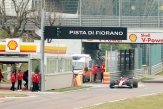
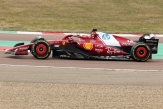
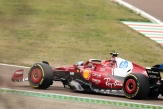
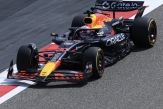
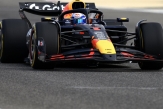
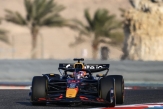

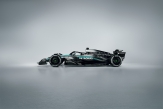
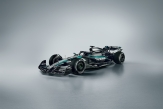

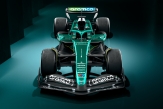
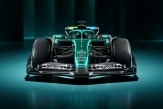
.jpg)
.jpg)
.jpg)

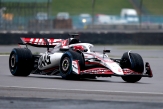

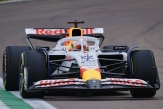
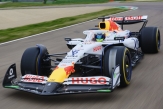



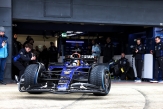
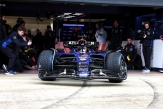
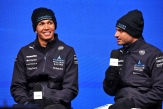

02/12/2025 от Огнян Тенчев (drJeckyll), няма коментари